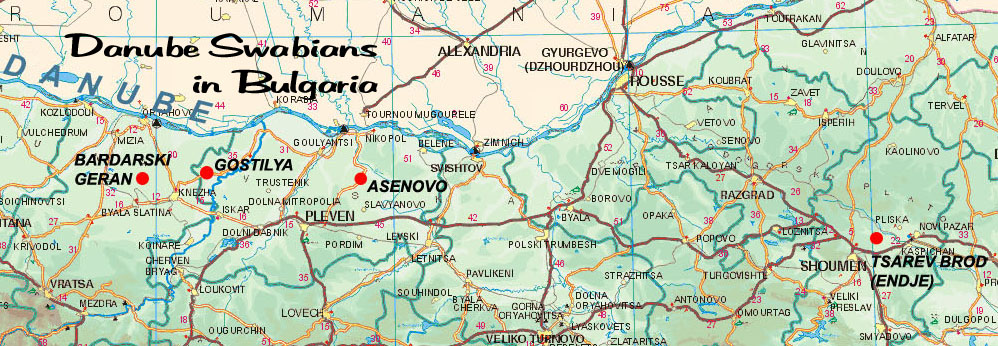Bibliography
Sources Used For This Work
-
Njagulov, Blagovest (1999). "Banatskite bǎlgari v Bǎlgarija". Banatskite bǎlgari: istorijata na edna malcinstvena obtnost vǎv vremeto na nacionalnite dǎravi (in Bulgarian). Sofia: Paradigma. ISBN 954-9536-13-0.
-
Von Valentin, Louis (4 January 2003). "Bulgarien: Das etwas andere Dorf. Schwäbische Kultur zwischen Donau und Balkan" (in German). Preußische Allgemeine Zeitung / Das Ostpreußenblatt. Retrieved 2007-03-26.
-
Cenkova, Iskra. "Germanija, bǎlgarska prikazka" (in Bulgarian). TEMA. Retrieved 2008-08-09.
-
Contributions by Rose Vetter, Anton Laigep and Jody McKim Pharr
-
Roman Catholic church in Gostilya (image), author: Petar Iankov, permission code: CC-BY-2.5.
1: Common land (a common) is land owned collectively or by one person, but over which other people have certain traditional rights, such as to allow their livestock to graze upon it, to collect firewood, or to cut turf for fuel; "Hutweiden" (common pastures) of old times.
[Published at DVHH.org by Jody McKim Pharr 22 May 2013]






